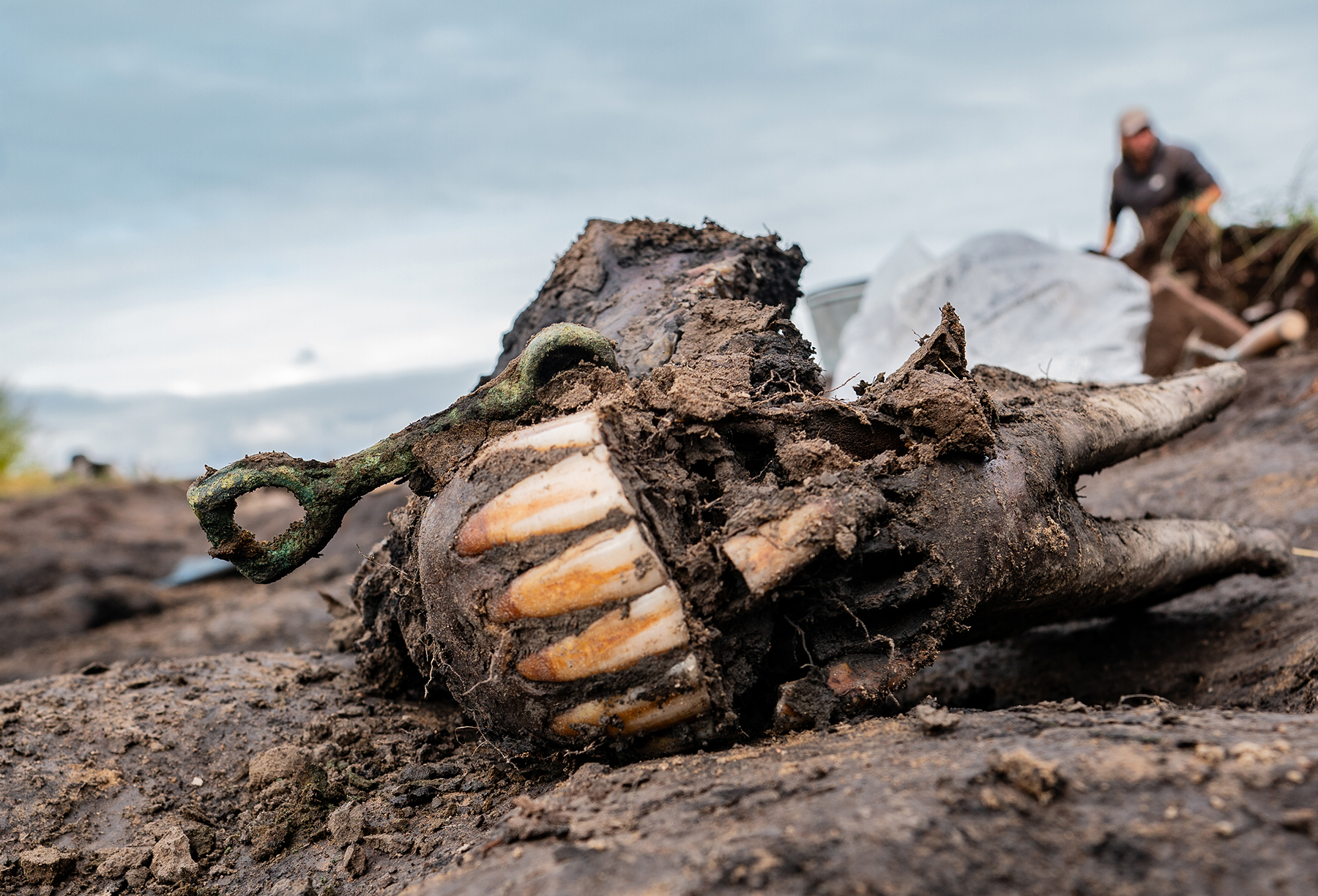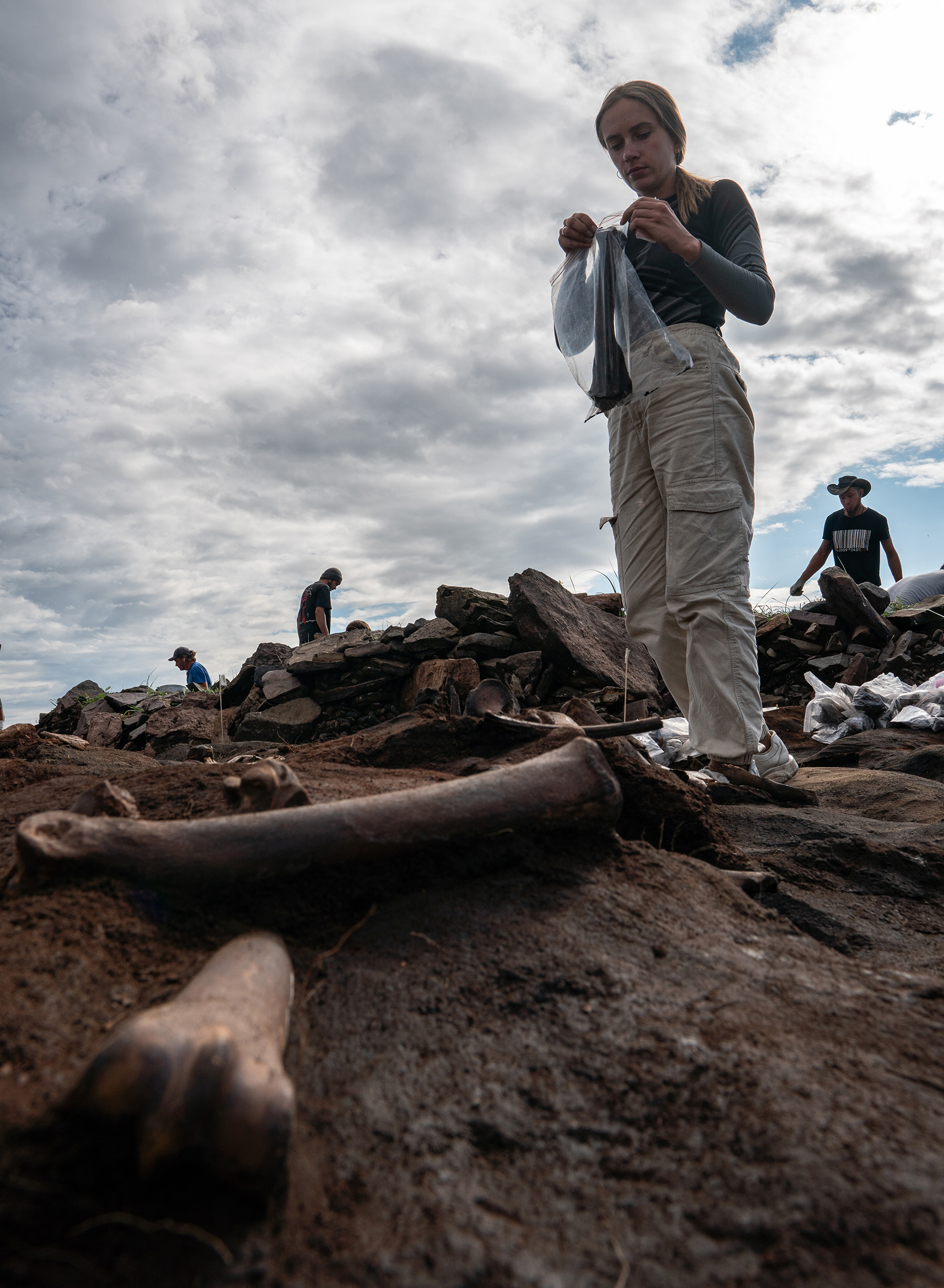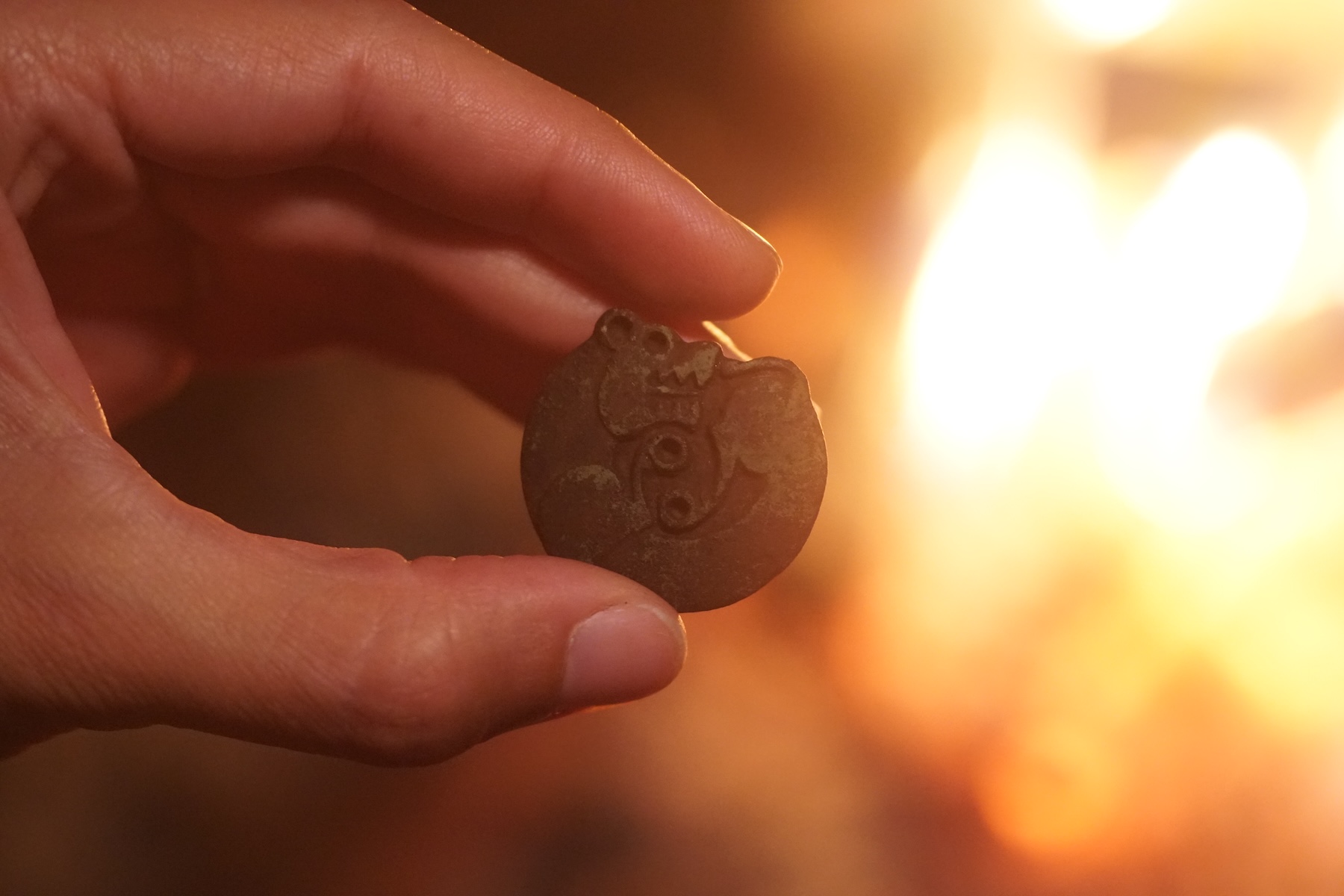Bernese research among the “Top 10 Archaeological Discoveries 2024”
An international research team led by the University of Bern and the Max Planck Institute for Geoanthropology in Jena has excavated one of the most significant and ancient burial mounds in Siberia. These discoveries provide valuable insights into the cultural origins of the Scythians, a horse-riding culture of the Eurasian Steppe, and have now been recognized by Archaeology Magazine as one of the “Top 10 Archaeological Discoveries of 2024.”
The Scythians of the Eurasian Steppe were known for their mobile lifestyle, archery skills, and intricate animal-style art. While their presence in the Pontic Steppe of modern Ukraine and southwest Russia is well-documented, their cultural roots have remained elusive.
Gino Caspari from the University of Bern and the Max Planck Institute for Geoanthropology in Jena, together with his team, excavated one of the largest and earliest Scythian burial mounds in Siberia. They uncovered scattered human bones and dozens of horses, likely sacrificed in honor of an elite individual. The findings provide evidence for funerary traditions that indicate extreme power displays and steep social hierarchies, which were once thought impossible in the marginal environment of the steppes. They also reveal deep connections to late Bronze Age cultural practices in Mongolia, highlighting the pivotal role of Tuva, a republic in southern Siberia, in the cultural development of the Eurasian steppe belt.
The discoveries by Gino Caspari and his team are among the Top 10 Archaeological Discoveries of 2024, an annual selection made by Archaeology Magazine, which has been published for over 70 years by the Archaeological Institute of America.
Years of Research under Difficult Circumstances
Gino Caspari excavated the tomb with colleagues Timur Sadykov and Jegor Blochin from the Institute of History for Material Culture of the Russian Academy of Sciences in Saint Petersburg. The tomb is located in a Siberian swamp, which presented significant logistical challenges. The team endured freezing temperatures, snowstorms, flooding, and swarms of mosquitos while performing the hard physical labor required at the excavation site. “This has been by far my toughest project, but the scientific results were absolutely worth it,” says Gino Caspari.
Since 2017, the research project has produced more than a dozen academic papers on diverse topics, including human sacrifices, violent skeletal trauma from intertribal conflicts, direct evidence of prehistoric fish consumption through ancient parasites, and the development of new methods in archaeological remote sensing.
A Grisly Tableau of Riding Corpses
Two new studies were recently published in Antiquity and Scientific Reports. These studies reveal key findings on the fragmented remains of humans and horses, believed to have been sacrificed in honor of an elite individual and arranged in a grisly tableau of riding corpses. Newly uncovered artifacts include Scythian-style objects and horse-riding equipment, marking this site as one of the earliest examples of Scythian funerary practices. The findings indicate that the origins of Scythian culture lie far to the east of their later heartlands in Eastern Europe. Parallels with late Bronze Age burial practices in Mongolia further suggest that Scythian funerary traditions are deeply rooted in the horse cultures of the eastern steppes.
“The horseback-riding Scythians have captured the imaginations of historians since the time of Herodotus,” explains Gino Caspari. “Our findings show that some of Herodotus’ descriptions of the Scythians, once thought to be exaggerations, actually have a very real cultural core in the rituals of the steppe.” He adds, “These discoveries highlight Tuva’s pivotal role in Eurasian prehistory. They emphasize the importance of Inner Asia in fostering early transcontinental cultural connections and the role of funerary practices in shaping the political and cultural landscape of the Eurasian steppe. The recognition as a Top Ten Discovery for 2024 is an acknowledgment of the importance of this rarely researched part of the ancient world.”
Publication details:Sadykov, T., Blochin, J., Taylor, W., Fomicheva, D., Kasparov, A., Khavrin, S., Malyutina, A., Szidat, S., Caspari, G. (2024). A spectral cavalcade: Early Iron Age horse sacrifice at a royal tomb in southern Siberia. Antiquity, 2024:1-20. Slepchenko, S., Sadykov, T., Fomicheva, D., Blochin, J., & Caspari, G. (2024). Parasites provide evidence for fish consumption among Iron Age Siberian pastoralists. Scientific Reports, 14(1), 23551. |
About the Institute of Archaeological Sciences (IAW)The IAW offers a comprehensive study of past epochs through the diversity of four archaeological disciplines (Mediterranean Archaeology, Archaeology of the Roman Provinces, Prehistoric Archaeology, and Near Eastern Archaeology). Research projects in Switzerland and abroad offer students an early introduction to academic practice. The Institute's research is based on the regional and thematic focuses of the four departments and covers all epochs of human history. |
About the Department of Ancient Near Eastern Archaeology of the IAWNear Eastern Archaeology covers from the beginning of the Neolithic period (about 12,000 BC) to the beginning of the Hellenistic period (4thcentury BC). The geographical area includes Mesopotamia, Syria-Palestine, Anatolia, and Iran. During times in which there was significant contact with the Ancient Orient, this area widens: the Arabian peninsula, Eurasian steppe belt, and Pakistan are included. The heartland of Mesopotamia is often referred to as the cradle of civilization and writing. There are two thematic foci: material legacies, and idealistic achievements of the Ancient Orient, both of which have been made accessible through large quantities of textual testimonies. Aspects such as settlement geography, urbanism, architecture, art, ceramics, funeral services, religion, literature, history, trade and economy, social history, and everyday life are all considered. Students are also taught theories and methods of modern archaeological research – the excavation of the Near East in particular. |
2024/12/17




